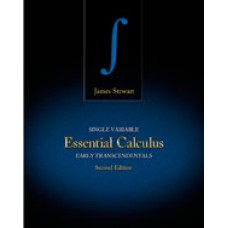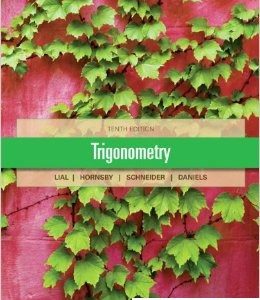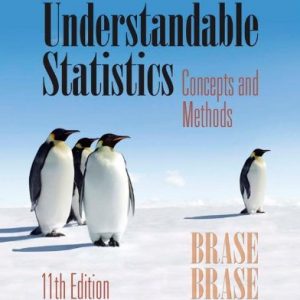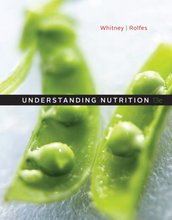This is completed downloadable of Solution Manual for Single Variable Essential Calculus Early Transcendentals, 2nd Edition

Product Details:
- ISBN-10 : 0176575464
- ISBN-13 : 978-0176575465
- Author: James Stewart
This book is for instructors who think that most calculus textbooks are too long. In writing the book, James Stewart asked himself: What is essential for a three-semester calculus course for scientists and engineers? SINGLE VARIABLE ESSENTIAL CALCULUS: EARLY TRANSCENDENTALS, Second Edition, offers a concise approach to teaching calculus that focuses on major concepts, and supports those concepts with precise definitions, patient explanations, and carefully graded problems. The book is only 600 pages–two-fifths the size of Stewart’s other calculus texts (CALCULUS, Seventh Edition and CALCULUS: EARLY TRANSCENDENTALS, Seventh Edition) and yet it contains almost all of the same topics. The author achieved this relative brevity primarily by condensing the exposition and by putting some of the features on the book’s website, www.StewartCalculus.com. Despite the more compact size, the book has a modern flavor, covering technology and incorporating material to promote conceptual understanding, though not as prominently as in Stewart’s other books. SINGLE VARIABLE ESSENTIAL CALCULUS: EARLY TRANSCENDENTALS features the same attention to detail, eye for innovation, and meticulous accuracy that have made Stewart’s textbooks the best-selling calculus texts in the world.
Table of Content:
- Ch 1: Functions and Limits
- 1.1 Functions and Their Representations
- 1.2 A Catalog of Essential Functions
- 1.3 The Limit of a Function
- 1.4 Calculating Limits
- 1.5 Continuity
- 1.6 Limits Involving Infinity
- 1.6 Exercises
- Chapter 1: Review
- Ch 2: Derivatives
- 2.1 Derivatives and Rates of Change
- 2.2 The Derivative as a Function
- 2.3 Basic Differentiation Formulas
- 2.4 The Product and Quotient Rules
- 2.5 The Chain Rule
- 2.6 Implicit Differentiation
- 2.7 Related Rates
- 2.8 Linear Approximations and Differentials
- 2.8 Exercises
- Chapter 2: Review
- Ch 3: Inverse Functions: Exponential, Logarithmic, and Inverse Trigonometric Functions
- 3.1 Exponential Functions
- 3.2 Inverse Functions and Logarithms
- 3.3 Derivatives of Logarithmic and Exponential Functions
- 3.4 Exponential Growth and Decay
- 3.5 Inverse Trigonometric Functions
- 3.6 Hyperbolic Functions
- 3.7 Indeterminate Forms and L’Hospital’s Rule
- 3.7 Exercises
- Chapter 3: Review
- Ch 4: Applications of Differentiation
- 4.1 Maximum and Minimum Values
- 4.2 The Mean Value Theorem
- 4.3 Derivatives and the Shapes of Graphs
- 4.4 Curve Sketching
- 4.5 Optimization Problems
- 4.6 Newton’s Method
- 4.7 Antiderivatives
- 4.7 Exercises
- Chapter 4: Review
- Ch 5: Integrals
- 5.1 Areas and Distances
- 5.2 The Definite Integral
- 5.3 Evaluating Definite Integrals
- 5.4 The Fundamental Theorem of Calculus
- 5.5 The Substitution Rule
- 5.5 Exercises
- Chapter 5: Review
- Ch 6: Techniques of Integration
- 6.1 Integration by Parts
- 6.2 Trigonometric Integrals and Substitutions
- 6.3 Partial Fractions
- 6.4 Integration with Tables and Computer Algebra Systems
- 6.5 Approximate Integration
- 6.6 Improper Integrals
- 6.6 Exercises
- Chapter 6: Review
- Ch 7: Applications of Integration
- 7.1 Areas between Curves
- 7.2 Volumes
- 7.3 Volumes by Cylindrical Shells
- 7.4 Arc Length
- 7.5 Area of a Surface of Revolution
- 7.6 Applications to Physics and Engineering
- 7.7 Differential Equations
- 7.7 Exercises
- Chapter 7: Review
- Ch 8: Series
- 8.1 Sequences
- 8.2 Series
- 8.3 The Integral and Comparison Tests
- 8.4 Other Convergence Tests
- 8.5 Power Series
- 8.6 Representing Functions as Power Series
- 8.7 Taylor and Maclaurin Series
- 8.8 Applications of Taylor Polynomials
- 8.8 Exercises
- Chapter 8: Review
- Ch 9: Parametric Equations and Polar Coordinates
- 9.1 Parametric Curves
- 9.2 Calculus with Parametric Curves
- 9.3 Polar Coordinates
- 9.4 Areas and Lengths in Polar Coordinates
- 9.5 Conic Sections in Polar Coordinates
- 9.5 Exercises
- Chapter 9: Review
- Appendixes
- A: Trigonometry
- B: Sigma Notation
- B: Exercises
- C: The Logarithm Defined as an Integral
- C: Exercises
- D: Proofs
- E: Answers to Odd-Numbered Exercises
- Index





